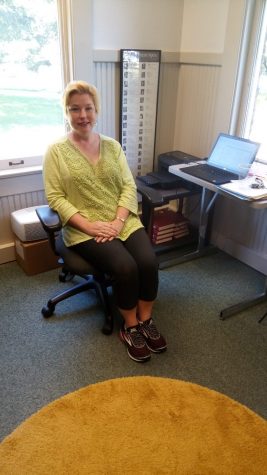Free software can help students
Problems involving computer software compatibility and affordability could soon be a thing of the past thanks to open source software.
Open source software refers to programs that allow users to change, improve or alter the source code and redistribute it as they see fit. This allows for an easier and less restricted exchange of various programs and, more importantly, they can be obtained legally and free of charge. Open source software can be particularly beneficial to university students.
Programs like the Firefox Web browser, the OpenOffice suite or Ubuntu operating system are all readily available for free and are easy to install and use. Although these programs have been around for many years and their benefits and popularity are growing, many people are unaware of their accessibility and ease of use due to the overwhelming use of Microsoft software.
Like many students, Michael Martinez, a freshman, is most familiar with Microsoft products on computers due to the fact that his school and family computers have always used Microsoft. “I’ve always used Windows ever since I could remember,” Martinez said. “I have some friends who use Mac laptops and they seem alright, but [Microsoft] Windows is what I’m used to. It’s on all the computers on campus.”
Though St. Edwards University has many computers on campus that run the Mac OS X, the fact that every student has had much experience using Microsoft Windows is hard to deny. While both Microsoft Windows and Mac OS X are both relatively stable and well-supported programs, they can be expensive.
Issues regarding expensive upgrades and file incompatibility plague computers regularly, despite the age and tested nature of the technology. This issue extends to other programs as well, such as Microsoft Office.
Files that were written or created on one program are often not compatible with future versions of the same program, forcing consumers to constantly purchase newer versions of expensive software.
Operating systems are constantly being updated and reworked as technology improves, but driver and file compatibility with older operating systems is notoriously difficult or often impossible to accommodate.
Dr. Karl Stolley, assistant professor of Technical Communication at Illinois Institute of Technology, is a major proponent for a change to the industry in this regard. “Digital artifacts should outlast the software that played a part in their creation. Insisting on open standards and formats, not software packages is the only way to make this happen,” said Stolley.
Certainly, file incompatibility is a frequent problem for students on any campus. Open source software helps address this problem by breaking out of the closed-format system and allowing data to remain useable and compatible years later, rather than confining it to a specific version of specific software. In addition, the success and proliferation of specific software bundles has caused major misconceptions about what choices students and consumers have for creating and using media. This creates limitations for usage, compatibility and creativity.
An example of this would be PowerPoint. PowerPoint is a program created by Microsoft as a part of Microsoft Office that allows the creation and viewing of slideshows or slideware. The open source program OpenOffice contains a comparable slideware program that offers different or increased options, greater compatibility with various operating systems and is free.
One reason many people do not know about open source software, or are intimidated about using these programs, is a general lack of understanding about what they do and how to obtain them. Many assume that these programs are only for those who know how to manipulate software source code, or only helpful for those who know a lot about programming. This is not actually the case.
Although source codes are available, these programs can be installed and enjoyed with just as much ease as any other store bought software, without having to go to the store. Noting the difference between downloading open source software for free and pirating copyrighted software is important.
Downloading copyrighted software online via peer-to-peer networks, or BitTorrent clients, is illegal and dangerous. A downloader could be prosecuted or, more likely, run the risk of downloading dangerous viruses or spyware along with the intended files. Open source software is not only free of charge, but it is obtained through safe and well-established Web sites.
Drew Loewe, assistant professor of English Writing and Rhetoric at St. Edward’s, fully supports the use of open source software for students, as well as for anyone else who is tired of the system of software bundles and file version incompatibilities. “It’s easier to use these programs than to shackle myself to the cycle of upgrades and expensive bloatware,” said Loewe.






